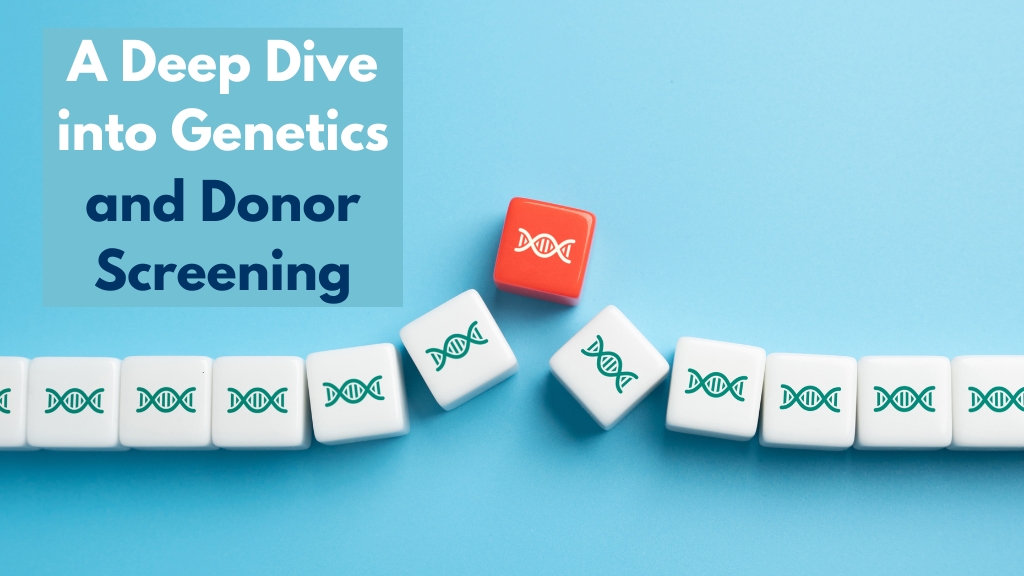Why Do Adverse Outcomes Still Occur? A Deep Dive into Genetics and Donor Screening

If you’re considering using a sperm donor, you might assume that with extensive genetic screening and family history assessments, adverse outcomes would be entirely preventable. Unfortunately, this is not the case. So, why do congenital anomalies, developmental delays (DD), intellectual disabilities (ID), autism spectrum disorder (ASD), and genetics conditions still happen?
The answer is complex. Let’s break it down.
How Fairfax Cryobank Helps Reduce Risk
At Fairfax Cryobank, we take extensive precautions to minimize the risk of genetic conditions in donor-conceived children. Here’s how:
- Expert Genetic Oversight: Our facility is staffed by a full-time genetic counselor and a medical director who is an MD PhD clinical geneticist. They carefully review genetic concerns related to our donors.
- Comprehensive Family Medical History: Each donor provides a detailed three-generation family medical history, with targeted questions to assess potential genetic risks. Any donor with a history that increases the risk beyond the general population is excluded.
- Chromosomal Analysis: All donors undergo karyotyping to check for structural and numerical chromosome abnormalities that could lead to genetic conditions in offspring.
- Expanded Carrier Screening (ECS): Donors are tested for over 500 severe childhood-onset autosomal recessive conditions to identify genetically unsuitable matches.
- Infectious Disease Screening: Donor sperm samples are frozen and quarantined for six months to allow additional infectious disease testing, reducing the risk of congenital infections.
- Ongoing Health Updates: Active donors must update their health history at each visit. Inactive donors are contacted annually, and both donors and recipients are encouraged to report any changes in family health. Any reported concerns, known as adverse outcomes, are thoroughly investigated, and recipients are notified if a donor is restricted while pertinent medical updates that are do not cause a restriction are provided on a donor’s online Summery Profile.
The Many Causes of Congenital Conditions
Despite the precautionary measures discussed above, the fact remains that congenital conditions can arise from a combination of genetic and environmental factors. While some conditions are linked directly to genetic changes—like Down syndrome (a chromosomal abnormality) or cystic fibrosis (a single-gene disorder)—most congenital anomalies have no known or single underlying cause. This means that even with the most comprehensive testing available, there are some risks we simply cannot predict or prevent.
The Limits of Genetic Testing
It’s important to understand that no genetic test can screen for every possible condition. Fairfax Cryobank donors undergo two key types of genetic testing:
- Chromosome Analysis (Karyotype): Think of this as scanning a set of encyclopedias on a bookshelf. This test can detect if a whole chromosome (a book) or a large segment (a set of chapters) is missing or duplicated. It is looking for possible hereditary chromosome changes. However, it doesn’t check every individual page or sentence for errors, meaning some genetic variations may go undetected.
- Expanded Carrier Screening (ECS): This test looks for changes in genes associated with severe childhood onset autosomal recessive conditions, which occur when both biological parents contribute a genetic variant. You can think of this like spell-checking the words on a page. However, genetic conditions can follow other inheritance patterns (autosomal dominant, X-linked, or mitochondrial), which sperm donors are not tested for.
Additionally, some genetic conditions arise from de novo mutations, meaning they occur spontaneously in an individual rather than being inherited. These types of genetic changes wouldn’t be detected through standard donor screening.
Finally, there is no screen or test that can predict the occurrence of a birth defect or universally rule out intellectual disabilities or autism. The technology simply does not exist to do so given the many causes of each.
The Evolution of Genetic Screening
Genetic screening has come a long way. Initially, some labs only tested for a handful of genes, while today’s panels analyze hundreds. Despite these advancements:
- If your donor was screened with an older, more limited panel, there’s a higher chance he may be a carrier of a condition that wasn’t tested.
- Even with today’s expanded panels, no test can analyze every part of every gene, meaning a negative result lowers but does not eliminate the risk of being a carrier.
Final Thoughts
While genetic screening significantly reduces risk, it does not eliminate it entirely. Genetics is incredibly complex, and many conditions have unknown causes or unpredictable inheritance patterns. Understanding these limitations helps set realistic expectations and reinforces the importance of communication and ongoing medical advancements in reproductive genetics.






